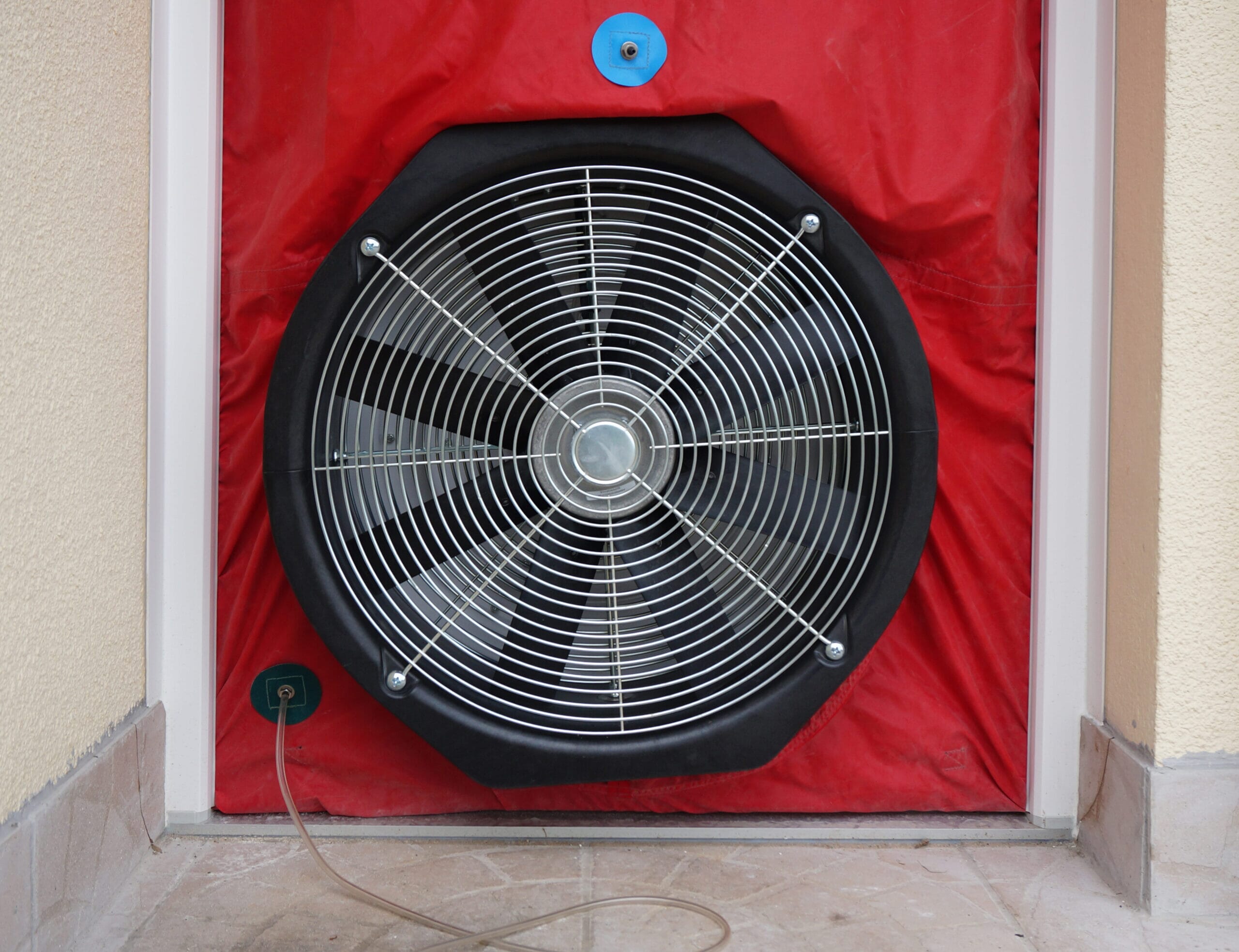
Commercial Air Leakage Testing – Top Tips
Regulatory Updates
Commercial Air Leakage Testing – Top Tips
Part L requires all new commercial buildings over 500sqm be air tested for air permeability as part of achieving Building Control approval; this is for both brand new sites and extensions to existing buildings.
1. Keep an eye on perpendicular mortar joints
During construction, give extra attention to perpendicular mortar joints – we recommend the application of a similar quality mortar to that which you would use on external brickwork.
2. Pay attention to cavities and roof voids
During construction, completely seal or close off all holes that bridge the cavity or roof void.
3. Watch the use of bare block work
Medium density blocks in the wall construction are not designed to be air tight, so we recommend that you paint the bare block work if it is to be the finished surface. This will improve its air tightness.
4. Profiled cladding has excellent air tightness
But the areas where leakage can occur are perimeter joints of individual sheets, areas where it meets at different angles (e.g. wall plate steel and roof pitch) and at the point where it meets windows, doors or block work. Care should be taken to seal the joints.
5. Be careful with your air conditioning units
Air conditioning is inefficient in an environment that is not well sealed. Please ensure your AC contractor can demonstrate that the entire system including vents and extracts is air tight.
6. Suspended ceilings do not form an air tight barrier
As suspended ceilings are not designed to create an air tight barrier, you will need to ensure that the ceiling above is air tight, i.e. plasterboard and perimeter sealed.
7. Ventilation and extractor systems
These systems often use a concertina flexi pipe from a faceplate to an appliance. Ensure that the hole cut for the flexi pipe or appliance is a tight fit and well-sealed.
8. Ensure switches, sockets and light fittings have a tight fit
When using switches, sockets, light fittings and spot lights in plasterboard, it is important that these items are a tight fit. You may choose to seal conduits and backing boxes to create an air tight barrier.
9. Make sure boxed areas are also on your radar
Toilet soil pipes often run into a boxed area that contains the soil stack. Great care should be taken to ensure that this boxed area is tight fitting and well-sealed to prevent air leakage between floors or even loft spaces.
10. Be ready on the day of the air test
Being ready for the air test engineer is very important. Make sure mechanical vents, ducts and air conditioning units are closed but not sealed. Make sure that boilers and flammables are shut down. You will also have to ensure that internal edges of all external windows and external doors are silicone or caulked.
Would you like to know more?
We know that an air test ‘fail’ will cause you an expensive delay. With our construction site experience, and thousands of air tests under our belt, we have just what you need to get you that important ‘pass’. We are committed to giving you the best price and the best service for commercial Air Leakage Testing.





